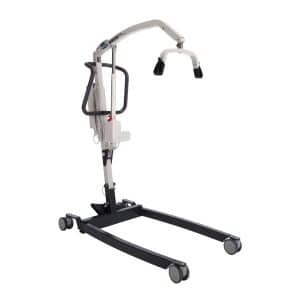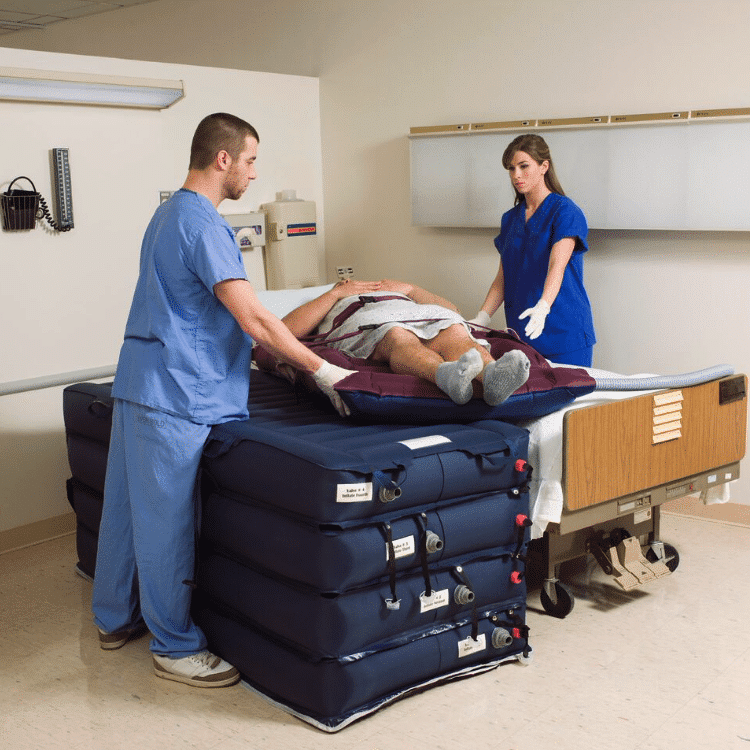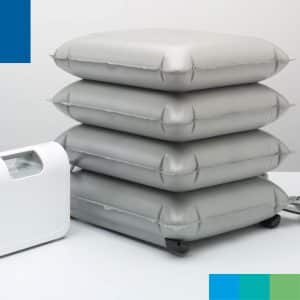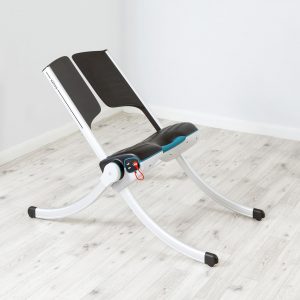The Best Falls Lifting Equipment For Hospitals In 2024 | Inpatient Falls Statistics
If you’re working on improving the outcomes of inpatient falls in your hospital, you’re likely to be looking at implementing lifting equipment to enable your staff to safely and quickly respond to falls.
The purpose of this article is to compare the most popular lifting equipment option and give you a clear understanding of the positives and drawbacks of each, so you’re able to make the best decision for your hospital.

Inpatient falls statistics
How many inpatient falls occur in hospitals?
Falls are the most frequently reported incident affecting hospital inpatients, with 247,000 falls occurring in inpatient settings each year in England alone (NHS Improvement)1.
Cost of falls that occur in hospitals
An estimate by NICE in 2015 shows that falls that occur in hospitals cost the NHS around £575m every year, which means that the NHS spends more than £1.5 million each day as a result of inpatient falls. In 2015, an estimated 250,000 inpatients experienced a fall, costing trusts around £2,600 per patient2.
Related article: How Much Do Patient-Handling Related Injuries Cost The NHS?
Best falls lifting equipment for inpatient falls
- Mobile Hoists
- Inflatable Flat Lifting Equipment
- Mangar Inflatable Lifting Cushions
- Raizer Lifting Chair
Mobile Hoists

Whilst mobile hoists are excellent for a lot of patient-handling tasks in hospitals, that are some drawbacks to using them to respond to inpatient falls in hospitals.
Benefits of Mobile Hoists
- Low cost and training. Your hospital is likely to already own multiple hoists, so the extra cost and training of staff are minimal.
- Suitable for lifting particularly frail patients. Because you can use a hoist to transfer someone in a sling from the floor directly to a bed or chair, a hoist can be used for very frail or non-ambulant patients that are unable to mobilise from a lifting chair or cushion.
Drawbacks of Mobile Hoists
- Impact on staff time. Lifting someone with a hoist and sling typically takes several staff and is time-consuming. The time it takes to find a hoist and sling and then wheel it to the location of the fall, before then lifting the person up, means the fallen person is likely to spend longer than necessary on the floor, and the staff will be spending more time than necessary responding to falls.
- Portability. One of the main drawbacks of using mobile hoists to respond to falls in hospitals is their size and lack of portability. If a patient has fallen in an enclosed area such as in a bathroom or next to a bed, which are both common scenarios, you will struggle to lift them using a hoist due to the lack of space. Also, hoists can be difficult to quickly transport from one ward to another, or from one area of the hospital to another, impacting staff time and response time.
- Lack of dignity. For patients, and particularly those with dementia, being lifted in a hoist can be very distressing due to the ‘hands-on’ and enclosed nature of the sling. For ambulant patients, a hoist and sling is normally an overly passive intervention that can take their independence away.
- Manual handling. Using a hoist and sling to lift someone involves a lot of manual handling to roll and manoeuvre the fallen person to get the sling in position, and then lift them up into a chair or bed.
Inflatable Flat Lifting Equipment

Inflatable flat lifting equipment allows you to lift fallen persons in a completely flat position, and transfer them straight onto a bed or patient stretcher. Air-assisted lifting devices such as the HoverMatt are typically inserted under a patient and inflated using a pump.
Benefits of Flat Lifting Equipment
- Suitable for very frail or injured fallers. Whereas the other lifting equipment options on this list are most suitable for minor or no-injury falls, flat lifting equipment is suitable for use with fallers that are very unwell or have suffered major injuries, as it allows them to be lifted in a flat position and transferred straight onto a bed or patient stretcher.
- Very low force is required. Air-assisted transfer devices like the HoverMatt reduce the force required to move patients by 80-90%, which lowers the risk of injury to staff.
Drawbacks of Flat Lifting Equipment
- Complex for staff to use. Compared to equipment such as Raizer Chairs or Hoists, air-assisted transfer devices are by far the most complex to use, and subsequently, training staff on their use can be problematic, which could lead to a challenging implementation.
- Impact on staff time. Responding to falls using a flat lift can take a long time due to the time it takes to set up the equipment and carry out the lift, negatively impacting staff time.
- Costly. Air-assisted transfer devices are also the most expensive option when compared to the other options on this list.
- Noisy. Due to the use of a compressor and air to assist with the transfer, this method of transfer is the noisiest, which may cause distress to the patient and other patients or family members in the ward.
Mangar Inflatable Lifting Cushions

The Mangar Lifting Cushions are a range of air-powered emergency lifting cushions that are designed to be put under a fallen person and inflated to lift the person off the floor.
There are currently three models of the Mangar Lifting Cushion:
- The Elk. The Elk is the smallest cushion and doesn’t have a backrest, making it very portable. Safe working load: 450kg
- The Eagle. Larger than the Elk, but smaller than the Camel, the Eagle is the latest cushion from Mangar and incorporates a backrest to help support the back, neck, and head of the fallen person. Safe working load: 220kg
- The Camel. The largest and widest cushion in the Mangar range, and with a backrest, the Camel is particularly suitable for larger patients. Safe working load: 320kg
Benefits of the Mangar Cushions
- Portability. This is particularly true with the Mangar Elk, which weighs just 3.6 kg and folds up for easy carrying.
- Versatility. With high safe working loads, the Mangar cushions are suitable for lifting bariatric patients.
- Cost. Cost-wise, the Mangar cushions are economical and are one of the cheaper options on the market.
Drawbacks of the Mangar Cushions
- You have to transfer the fallen person onto the cushion, which requires much more space and manual effort from the staff, and involves a lot of hands-on pushing and pulling on the faller.
- Instability. The Mangar cushions rely on air to lift the fallen person, which means that when the cushion is inflating it is quite unstable for the patient and assistance is required from a staff member. However, when the Mangar cushions are fully inflated, they are solid and stable.
- Noise. The noise of the Mangar compressor can be distressing for some patients, particularly those with dementia. The noise can also be distressing for other patients in a ward, particularly if the Mangar needs to be used during the night.
- Battery life. The Mangar compressor’s battery lasts for 3-4 lifts, which can sometimes leave you unable to lift a fallen patient due to a flat battery. Also, the batteries typically require replacing annually.
Raizer 2 Lifting Chair

The Raizer 2 is a motorised lifting chair that is assembled around a fallen person to lift them up from the floor after they have had a minor or no-injury fall.
Benefits of the Raizer
- Low impact on staff time. Ease of assembly and speed of operation allows a fast response – typical operation including assembly is about 3 minutes, minimising impact on staff time.
- Reliability. The Raizer can complete 80 lifts on one battery charge and it can be left on charge, so you will never be in a situation where a patient has fallen and you are unable to lift them due to the battery being flat.
- Low manual handling risk. The Raizer assembles around the fallen person, so you don’t have to physically get someone onto it or move them around hardly at all, so there is significantly less risk of injury to staff.
- Stability. The four lifting arms keep the Raizer stable as it lifts, giving assurance to the fallen patient and staff member.
- Ease of use and training. The Raizer is simple to use and impossible to assemble incorrectly, so staff find it easy to use, making implementation and training straightforward.
- Can lift the faller to a perching position, making standing or transferring much easier.
Drawbacks
We have a complete article covering all of the drawbacks of the Raizer (read here). The main drawbacks of the Raizer are:
- Weight of the Raizer seat unit. The seat unit weighs 8kg, which can be heavy if carried for long periods of time without a Raizer trolley.
- Safe working load. With a safe working load of 150kg, the Raizer isn’t suitable for bariatric residents.
- Cost. The Raizer chair is more costly than a traditional hoist and sling or Mangar cushion. We have an article outlining exactly how much the Raizer costs, and what affects the price – read here.
Which option is right for your hospital?
We’ve tried to do our best to set out the benefits and drawbacks of each falls lifting equipment option, but ultimately, the piece of equipment you choose for your hospital is a choice that may differ depending on your requirements.
The majority of hospitals would have a couple of types of lifting equipment to suit every scenario. For example, most hospitals would have flat lifting equipment for lifting very frail or injured fallers, and Raizer Chairs or Mangar Cushions to enable a fast response to ambulant fallers that have only suffered minor or no injuries.
If you would like to talk the options through with us, or book a trial of the Raizer Chair in your hospital, feel free to contact us on the form below and we will be happy to talk.
Citations
[1] https://www.data.gov.uk/dataset/74aa0d1c-6a76-4c57-bf3b-b4155822d307/national-audit-of-inpatient-falls-2020
[2] https://www.nice.org.uk/guidance/cg161/chapter/introduction
Related articles
5 Tips For Avoiding Injury When Moving And Handling Patients
How Much Do Patient-Handling Related Injuries Cost The NHS?
Get in touch
Got a question or want to send us a message? Let’s talk.
